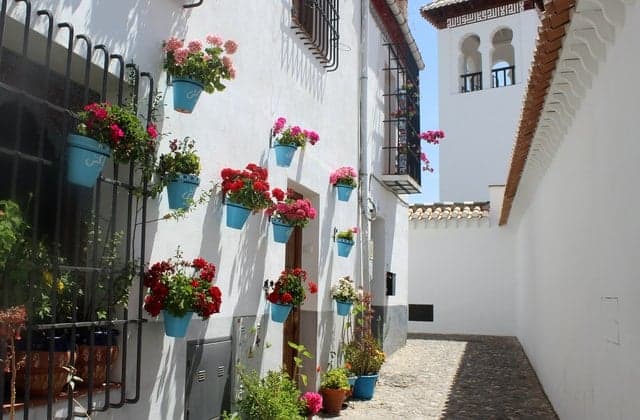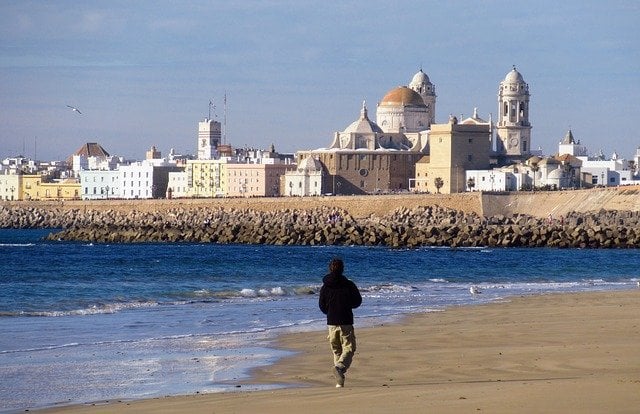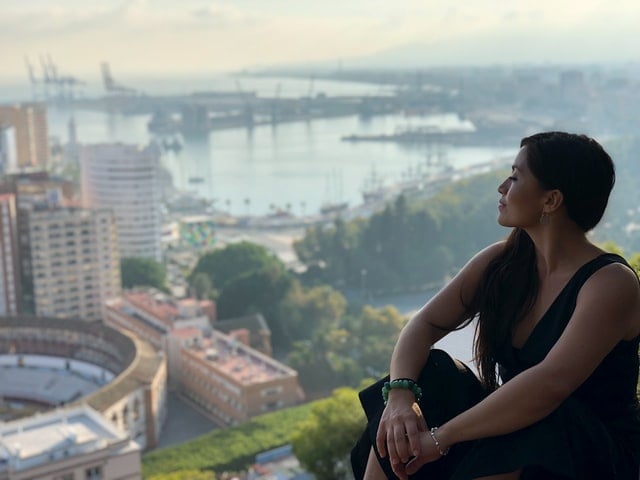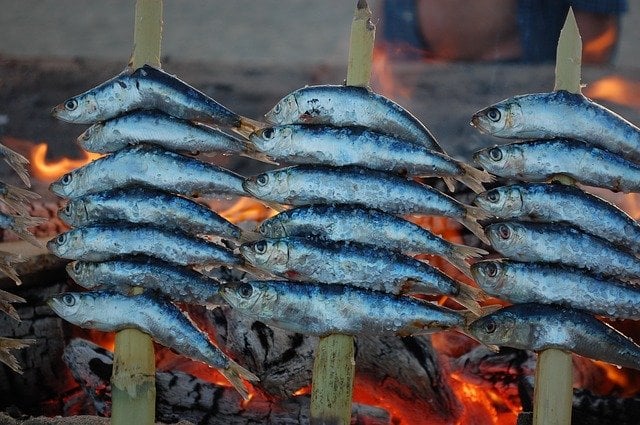Seven things to know before moving to Spain's Andalusia

Spain’s sun-drenched Andalusia is extremely popular with tourists, but foreigners thinking of settling here should be aware of the idiosyncrasies of life in this southern region before making the move.
Andalusia is big, bright and boisterous; the region of Spain that epitomises many of the Spanish stereotypes of flamenco, dry landscapes and bullfighting.
But in truth there’s plenty more variety of scenery, history and culture in this 87,600km2 region, so much so that painting it with a broad brush can be challenging.
EU residents make up the bulk of Andalusia’s foreign population, with Britons, Swedes, Germans, Belgians, French and Romanians accounting for 275,000 of those registered in the latest census.
What makes it so popular with foreign residents? And what kind of things have they learnt about Andalusia since moving here?
It’s not just beaches and dry land
Andalusia has more than just beaches, although the fact that it boasts more than 400 “playas” should be a big allure for anyone thinking of moving to the coast.
Andalusia is drier and less green in comparison to Spain’s northern regions (Andalusia is actually home to the driest place in continental Europe, El Cabo de Gata) but there are forests on its Mediterranean side. The region also has two national parks and 22 natural parks.
And to cap it off there are the snowy Sierra Nevada mountains in Granada with Europe’s most southerly ski resorts.
So remember that a move to Andalusia doesn’t necessarily mean having to live in a dry wasteland with only shrubs growing.

The ancient city of Cádiz has some of the best beaches in Andalusia. Photo: Pablo Valerio/Pixabay
Great weather but extreme heat in summer
Andalusia’s mild winters are a big draw for foreigners thinking of making the move, but as you may know already, summers in southern Spain can be fairly unbearable with daytime temperatures regularly over 40C in the interior.
Coastal cities such as Málaga and Huelva have a more moderate climate all year round due to their location and sea breeze, and towns and villages at a higher altitude such as Grazalema in Cádiz province and Trévelez and Bubión in Granada can offer some respite in summer, but the cold does bite more in winter.
You’re guaranteed around 275 to 300 days of sun pretty much everywhere in Andalusia but if extreme temperatures are not something you want, do your research beforehand as there are areas than can get surprisingly cold in winter and hellishly hot in summer.
You can submerge yourself in Spanish society
Although Andalusia has a sizeable foreign population, they still only represent 7 percent of the regional total of 8.4 million inhabitants.
Málaga and the Costa del Sol are home to 250,000 foreign residents, most of them sun-seeking Europeans, whereas Almería, Granada and Seville also have considerable amounts of foreign residents.
If what you’re looking to do is integrate into Spanish society rather than end up in an expat bubble, there are plenty of places in Andalusia where you can do this.

Enjoying the view of Málaga, voted one of the best cities for 'expats' in the world. Photo: Trabajar por el Mundo By Digital Explorer/Unsplash
It’s not the easiest place to learn Spanish
Many Andalusians have a thick accent which differs greatly from the more clearly enunciated Spanish spoken in the upper half of northern Spain.
If you’re a beginner Spanish learner, you may struggle to understand what they’re saying with the abundance of slang, their quick rhythmical speech, the disappearance of the ‘d’ and ‘s’ at the end of words and the lisp that’s common to some areas.
It will take some getting used to but if you crack the ‘andalú’ code, you’ll be able to understand pretty much all varieties of Spanish.
And don’t think you’ll necessarily be able to rely on your English outside of places such as Málaga where the level is relatively good, as a 2019 report by ABA English found that Andalusia was the Spanish region with the worst level of English.
Fun-loving character feeds into mañana, mañana attitude
Andalusians have a reputation among Spaniards for putting play before work any day of the week.
And while this is a stereotype that many ‘andaluces’ consider unfair and want to shake off, it is true that some foreigners will find the lack of punctuality, the afternoon closing hours and the slow pace with which official matters are handled a tad frustrating.
The chances are that you’re moving to Andalusia to enjoy a happier and calmer lifestyle, so even though the region isn’t renowned for being the most efficient, remember that it’s people are among the warmest, most fun-loving in Spain.
Great quality of life on the cheap
Average monthly expenses in Andalusia are around €900, below the national average.
Before the coronavirus crisis, monthly rents in the region stood at €500, €171 cheaper than for the standard rent in Spain.
It’s the second cheapest region in which to grocery shop according to the 2019 Barometer of Regional Supermarket Prices and Almería and Jeréz are among the most affordable provinces in which to food shop.
Eating out on the cheap is also easy in Andalusia, and in cities such as Granada, Almería and Jaén free generous tapas are famously served with cañas (small beers).
If it’s history and culture you’re after, Andalusia’s heady mix of Moorish and Christian architecture makes a leisurely stroll through many of its villages and towns an experience in itself. There are also seven UNESCO World Heritage site in Andalusia to visit.
In a nutshell, you won’t need to spend a lot to enjoy life in Andalusia.
Málaga, where the cost of living is higher than elsewhere in Andalusia, has just been voted the sixth best city in the world for ‘expats’ by Internations.

Who's up for sardines cooked over a fire? One of countless delicious and healthy meals from Andalusia. Photo: Guillermo Gallivants/Unsplash
Cheaper properties but big differences between cities
The average cost per square metre for a property in Andalusia stood at €1,571/sqm in July 2020.
That’s below the national average of €1,735/sqm but there are big differences between Andalusia’s different provinces and cities.
Whereas in Málaga, Cádiz and Seville property prices are above the €2,100/sqm mark, in other cities such as Huelva, Almería and Jaén houses and apartments are going for half that price.
READ ALSO:
- Five reasons I love living in Andalusia
- 'There is no doubt about it, Andalusia is different'
- Why are people in Granada so moody?
Comments
See Also
Andalusia is big, bright and boisterous; the region of Spain that epitomises many of the Spanish stereotypes of flamenco, dry landscapes and bullfighting.
But in truth there’s plenty more variety of scenery, history and culture in this 87,600km2 region, so much so that painting it with a broad brush can be challenging.
EU residents make up the bulk of Andalusia’s foreign population, with Britons, Swedes, Germans, Belgians, French and Romanians accounting for 275,000 of those registered in the latest census.
What makes it so popular with foreign residents? And what kind of things have they learnt about Andalusia since moving here?
It’s not just beaches and dry land
Andalusia has more than just beaches, although the fact that it boasts more than 400 “playas” should be a big allure for anyone thinking of moving to the coast.
Andalusia is drier and less green in comparison to Spain’s northern regions (Andalusia is actually home to the driest place in continental Europe, El Cabo de Gata) but there are forests on its Mediterranean side. The region also has two national parks and 22 natural parks.
And to cap it off there are the snowy Sierra Nevada mountains in Granada with Europe’s most southerly ski resorts.
So remember that a move to Andalusia doesn’t necessarily mean having to live in a dry wasteland with only shrubs growing.

The ancient city of Cádiz has some of the best beaches in Andalusia. Photo: Pablo Valerio/Pixabay
Great weather but extreme heat in summer
Andalusia’s mild winters are a big draw for foreigners thinking of making the move, but as you may know already, summers in southern Spain can be fairly unbearable with daytime temperatures regularly over 40C in the interior.
Coastal cities such as Málaga and Huelva have a more moderate climate all year round due to their location and sea breeze, and towns and villages at a higher altitude such as Grazalema in Cádiz province and Trévelez and Bubión in Granada can offer some respite in summer, but the cold does bite more in winter.
You’re guaranteed around 275 to 300 days of sun pretty much everywhere in Andalusia but if extreme temperatures are not something you want, do your research beforehand as there are areas than can get surprisingly cold in winter and hellishly hot in summer.
You can submerge yourself in Spanish society
Although Andalusia has a sizeable foreign population, they still only represent 7 percent of the regional total of 8.4 million inhabitants.
Málaga and the Costa del Sol are home to 250,000 foreign residents, most of them sun-seeking Europeans, whereas Almería, Granada and Seville also have considerable amounts of foreign residents.
If what you’re looking to do is integrate into Spanish society rather than end up in an expat bubble, there are plenty of places in Andalusia where you can do this.

Enjoying the view of Málaga, voted one of the best cities for 'expats' in the world. Photo: Trabajar por el Mundo By Digital Explorer/Unsplash
It’s not the easiest place to learn Spanish
Many Andalusians have a thick accent which differs greatly from the more clearly enunciated Spanish spoken in the upper half of northern Spain.
If you’re a beginner Spanish learner, you may struggle to understand what they’re saying with the abundance of slang, their quick rhythmical speech, the disappearance of the ‘d’ and ‘s’ at the end of words and the lisp that’s common to some areas.
It will take some getting used to but if you crack the ‘andalú’ code, you’ll be able to understand pretty much all varieties of Spanish.
And don’t think you’ll necessarily be able to rely on your English outside of places such as Málaga where the level is relatively good, as a 2019 report by ABA English found that Andalusia was the Spanish region with the worst level of English.
Fun-loving character feeds into mañana, mañana attitude
Andalusians have a reputation among Spaniards for putting play before work any day of the week.
And while this is a stereotype that many ‘andaluces’ consider unfair and want to shake off, it is true that some foreigners will find the lack of punctuality, the afternoon closing hours and the slow pace with which official matters are handled a tad frustrating.
The chances are that you’re moving to Andalusia to enjoy a happier and calmer lifestyle, so even though the region isn’t renowned for being the most efficient, remember that it’s people are among the warmest, most fun-loving in Spain.
Great quality of life on the cheap
Average monthly expenses in Andalusia are around €900, below the national average.
Before the coronavirus crisis, monthly rents in the region stood at €500, €171 cheaper than for the standard rent in Spain.
It’s the second cheapest region in which to grocery shop according to the 2019 Barometer of Regional Supermarket Prices and Almería and Jeréz are among the most affordable provinces in which to food shop.
Eating out on the cheap is also easy in Andalusia, and in cities such as Granada, Almería and Jaén free generous tapas are famously served with cañas (small beers).
If it’s history and culture you’re after, Andalusia’s heady mix of Moorish and Christian architecture makes a leisurely stroll through many of its villages and towns an experience in itself. There are also seven UNESCO World Heritage site in Andalusia to visit.
In a nutshell, you won’t need to spend a lot to enjoy life in Andalusia.
Málaga, where the cost of living is higher than elsewhere in Andalusia, has just been voted the sixth best city in the world for ‘expats’ by Internations.

Who's up for sardines cooked over a fire? One of countless delicious and healthy meals from Andalusia. Photo: Guillermo Gallivants/Unsplash
Cheaper properties but big differences between cities
The average cost per square metre for a property in Andalusia stood at €1,571/sqm in July 2020.
That’s below the national average of €1,735/sqm but there are big differences between Andalusia’s different provinces and cities.
Whereas in Málaga, Cádiz and Seville property prices are above the €2,100/sqm mark, in other cities such as Huelva, Almería and Jaén houses and apartments are going for half that price.
READ ALSO:
- Five reasons I love living in Andalusia
- 'There is no doubt about it, Andalusia is different'
- Why are people in Granada so moody?
Join the conversation in our comments section below. Share your own views and experience and if you have a question or suggestion for our journalists then email us at [email protected].
Please keep comments civil, constructive and on topic – and make sure to read our terms of use before getting involved.
Please log in here to leave a comment.